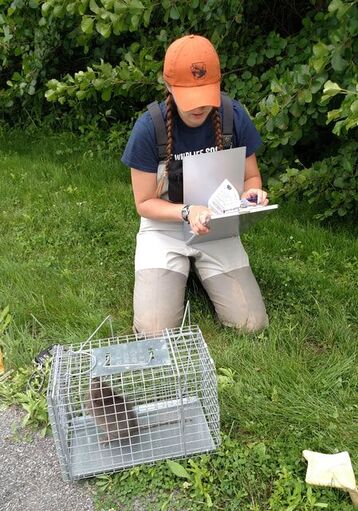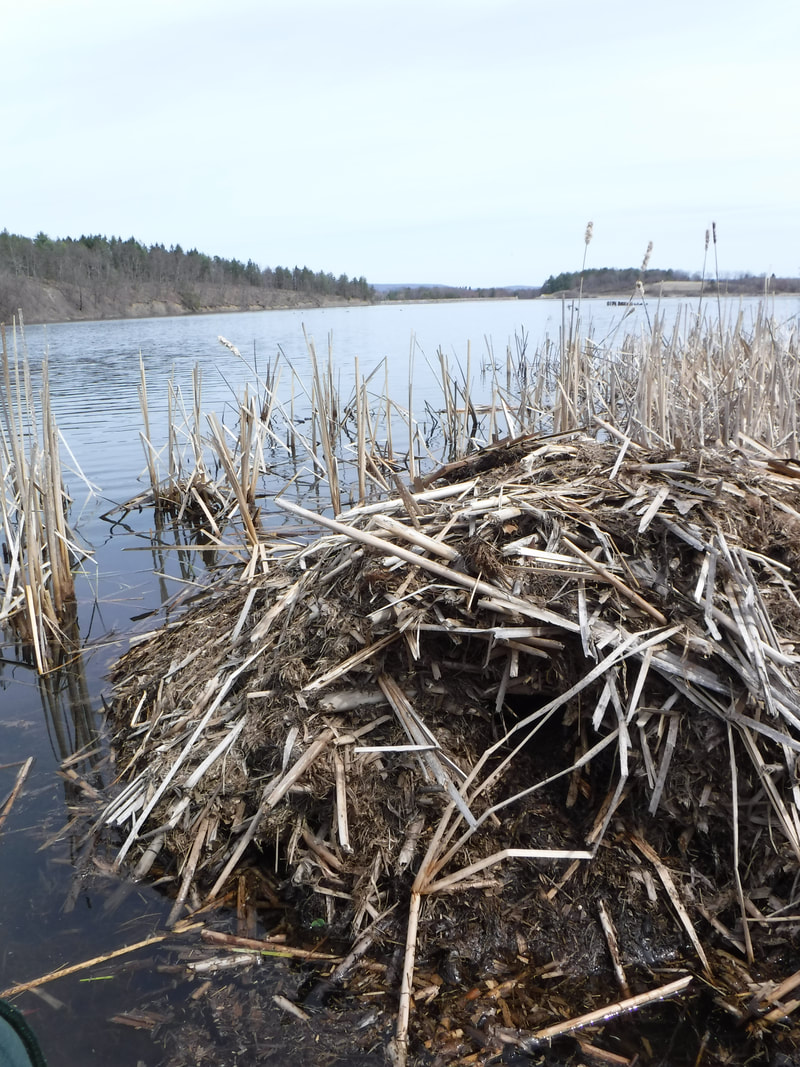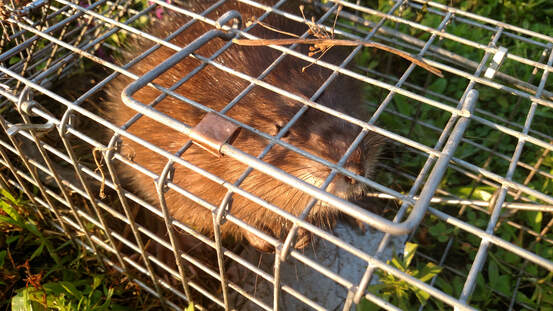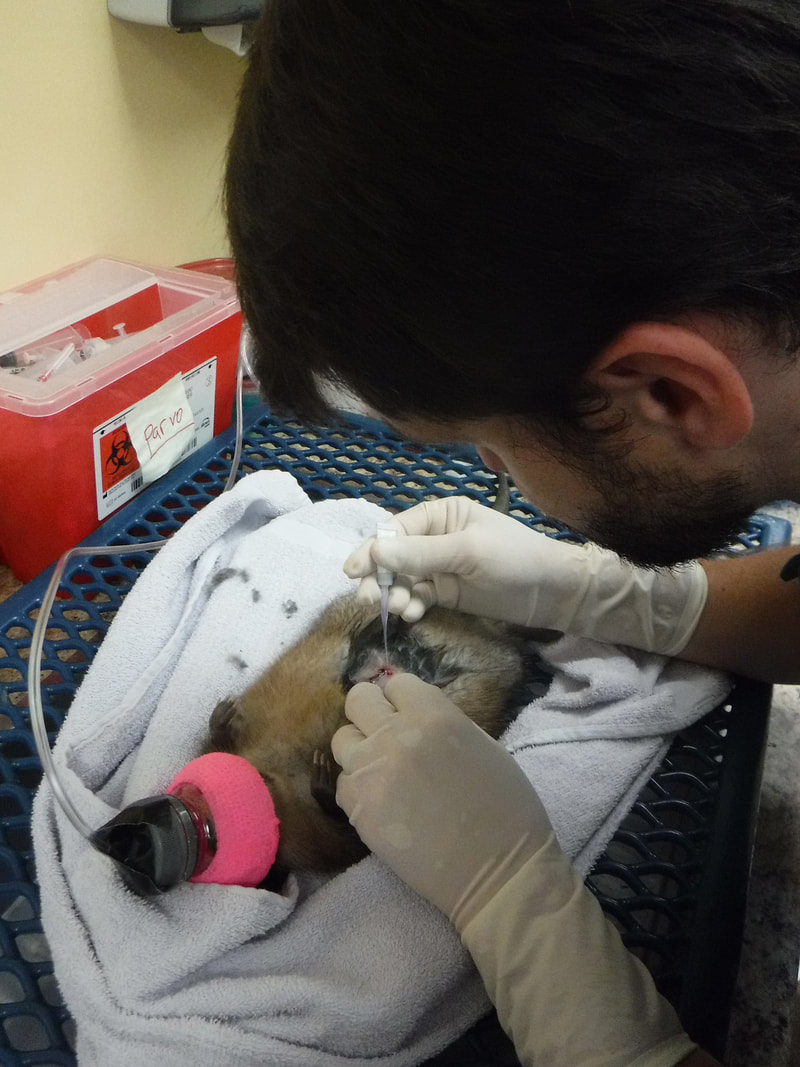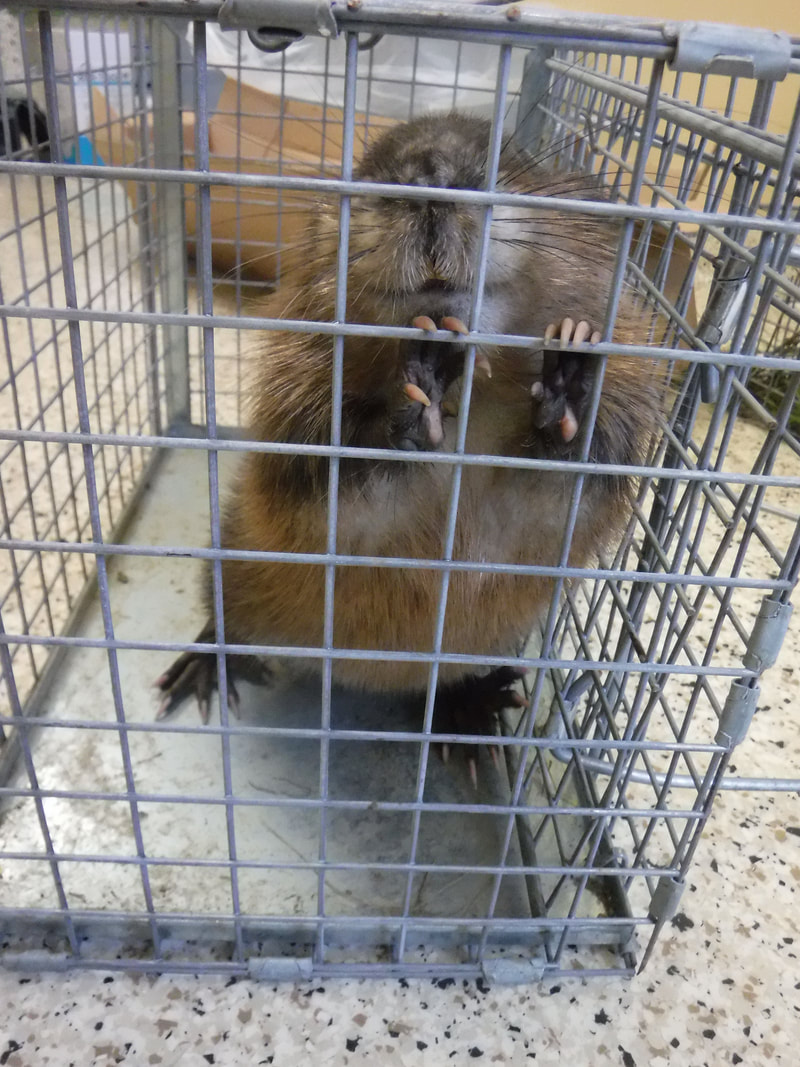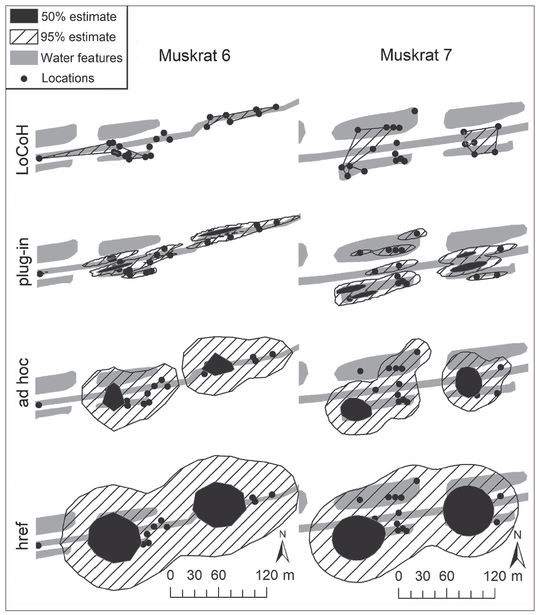Ecology of an Isolated Muskrat (Ondatra zibethicus) Population During Regional Population Declines
Evidence indicating a decline in muskrat populations in the United States during the past 40 years has led to speculation in regard to factors influencing muskrat survival. In order to understand population dynamics and survival, it is important to first define the ecology of local populations. The focus of our study was to investigate the dwelling structure use, movements, home range, and survival of radio-tagged muskrats (n = 17) in an urban wetland complex in central Pennsylvania.
Our manuscript has been published! Ecology of an Isolated Muskrat Population During Regional Population Declines
|
To collect data on muskrat movement and survival, we first had to catch muskrats. We utilized a variety of traps (e.g. single-door box, colony, floats, baited, scented, etc.), but only succeeded catching muskrats with double-door Tomahawk box traps covered with vegetation. With the aid of an experience trapper, Dr. Matthew Lovallo from the Pennsylvania Game Commission, we were able to catch 28 individuals at our study site in central Pennsylvania.
|
|
We implanted muskrats with VHF radio-telemetry receivers in to their abdominal cavity. I then conducted intensive radio-telemetry surveys to determine their locations, behavior (foraging, inside dwelling structure), and survival. I was able to observe muskrats sharing, on average 9 dwelling structures with at least one other muskrat, with one hut serving as a dwelling structure for 8 individual muskrats!
During the winter months, the ponds would freeze over and it was
common to see muskrats swimming and foraging under the ice. |
|
Survival Estimate |
We calculated overwinter survival rates for muskrats alive starting 8 November 2018 to 27 March 2019 using known-fate models with climate covariates that included average weekly precipitation (AVP) and total degree days per week below 0 degrees C (TDD). Our models suggested that precipitation (snow) had a positive effect on muskrat survival and implies that there are seasonal differences in the effect precipitation has on survival.
|
